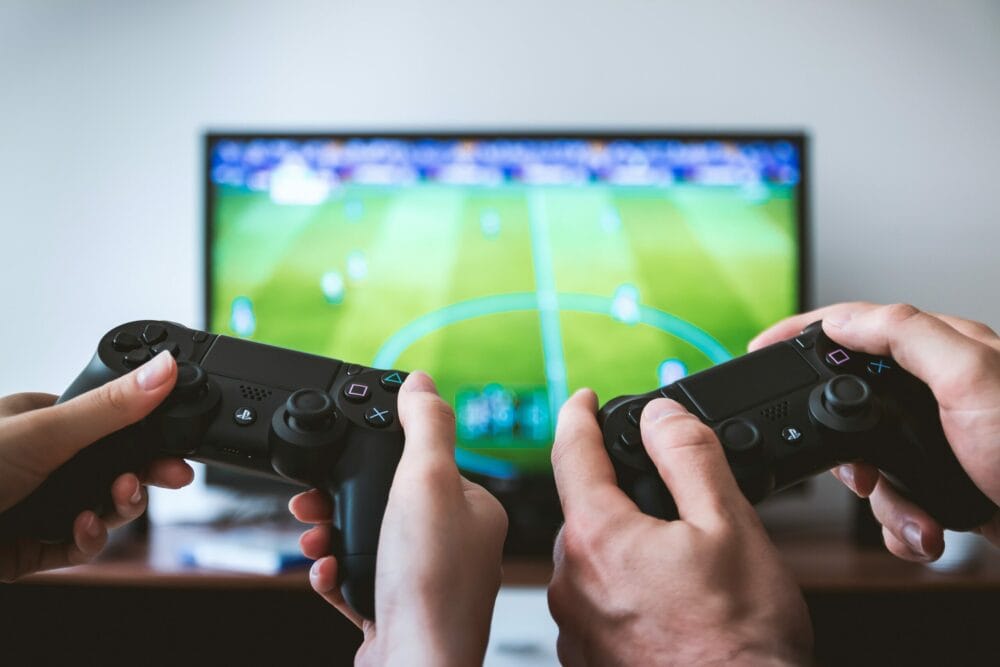Could gaming be a gateway to gambling?
Topics

Taran, from our Youth Advisory Board, highlights some of the similarities between gambling and gaming. He also explores how loot boxes work and ways to stop your child from developing a problem with gambling.
We know that video games can be addictive, and the old cliché of ‘you are glued to that screen’ can be implied light-heartedly. Still, some studies suggest that gaming can be a gateway into gambling. Many children and teenagers play video games, with on average, a child or adolescent playing between seven and 14 hours of video games per week. Video games also play a significant role in the lives of young adults, with 60% playing them.
How does gaming affect your brain?
Like gambling, gaming can be an entertaining activity many people engage in without developing a problem. In addition, gaming has positive aspects, such as providing social interaction and a way to connect with others worldwide. However, video games encourage compulsive use through their design, just as online gambling is designed to be addictive.
When playing video games, your brain releases a constant dopamine supply. Over time, your brain builds up a tolerance and requires even more dopamine release for gaming to feel fun. Unfortunately, this can dull other activities compared to exciting video games. Gaming has now become a lot easier, with the ability to do it on your mobile and therefore, on the go.
What are some examples of gambling in gaming?
Well, the primary source is loot boxes. Loot boxes are items within computer games which can be accessed through game play or purchased with in-game virtual currencies or real-world money. Loot boxes are usually randomised rewards; therefore, users do not know what is in the loot box before opening it.
The contents of loot boxes can range from new computer characters to weapons, armour, or ‘skins’ which change the appearance of computer characters. Loot boxes can improve the enjoyment and interest of computer games for their users. Buying loot boxes can be similar to casino games as you have a chance (odds) of winning something unique but as it is randomised, you can end up with something less desirable.
Using in-game currencies is clever because the conversion rate to real money is usually difficult to understand. Gamers can buy in-game currencies in batches e.g., 1050 FIFA points for £10. However, this makes it difficult for the gamer to find out how much they are worth in real money.
This can be dangerous as the gamer isn’t aware of how much they are spending on loot boxes and using in-game currencies to buy loot boxes can create a ‘wall of illusion’ that you aren’t spending real money. Therefore, the gamer may become inclined to buy loot boxes whilst using the in-game currencies, leading possibly to them developing a problem with gambling.
How to limit gambling in gaming
There are ways to stop this from happening, adding a limit on screen time is a good way of decreasing the time that is being spent gaming, which will lead to less money spent. Another way to reduce spending money whilst gaming, is to remove payment methods, which will help to avoid any impulsive purchases.
Finally, parents should monitor what their children are doing on video games and check in on them. Showing an interest in what they are doing ensures your child that they aren’t alone and then less likely to spend money on the game.
In conclusion
Although video games have many gambling dangers, an addiction takes time to form. You can stop this from happening earlier on by regular check-ups on children and young people and limit time on video games, as excessive use isn’t good.
If you start to notice a problem with gambling or gaming, then a serious and mature conversation would be needed to get to the bottom of the problem or even a referral to a professional.
Visit bigdeal.org.uk for more advice on young people and gambling.
Topics




